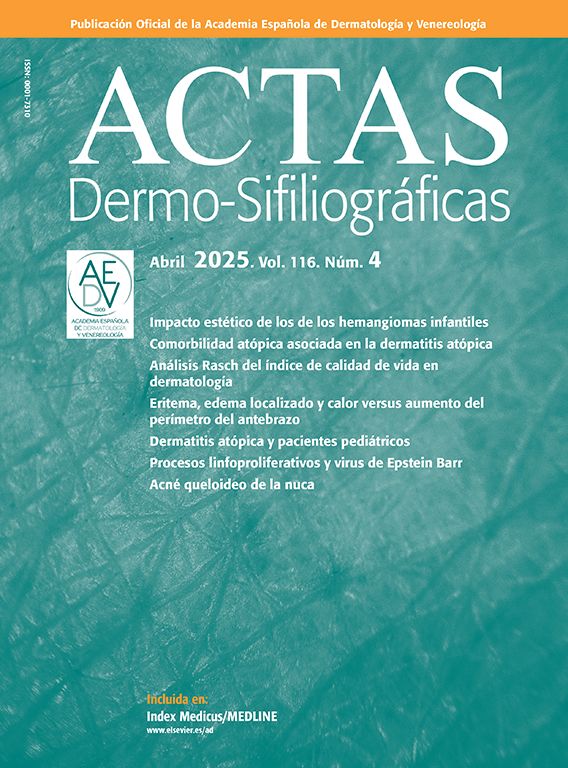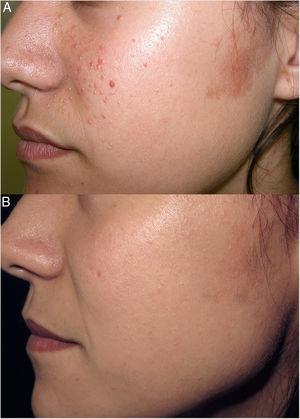A 71-year-old woman presented with a several-year history maculopapular and pigmented lesion on her right forearm in which she had noticed changes consisting of the presence of a 0.9cm erythematous popular lesion with pigment at the periphery (Fig. 1D). Dermoscopy revealed the presence of a whitish area with atypical vessels (Fig. 1C), while with confocal reflectance microscopy (CRM), a honeycomb pattern thickened without pagetoid cells was observed in the epidermis, and large disorganized areas at the dermoepidermal/dermal junction (Fig. 1A and B). At the periphery, an atypical reticular pattern was observed. Here the CRM showed abundant dendritic and round cells in the epidermis, and an atypical mesh in the dermoepidermal/dermal junction (Fig. 1E and F). Histopathological diagnosis was desmoplastic melanoma (DM) with a Breslow thickness of 3.3mm, associated with a malignant lentigo.
DM is a rare type of invasive melanoma with a challenging diagnosis, associated with chronic sun exposure and malignant lentigo. Dermoscopy of our case showed whitish areas with atypical vascularization in the central zone and an atypical reticulum in the zone consistent with malignant lentigo. CRM has described the presence of spindle cells intermixed with collagen fibers in the superficial dermis of DM. In our case, the areas with desmoplasia showed large disorganization on CRM, with pagetoid cells and atypical mesh at the periphery, corresponding to the malignant lentigo area.
In conclusion, DM often evolves from a pigmented macule in an elderly patient and in a chronically sun-exposed area. Therefore, for diagnostic purposes, it is essential to conduct a correct medical history and consider DM if atypical vessels are observed in dermoscopy, and marked disorganization is noted on the CRM, as well as signs of malignant lentigo on both dermoscopy and CRM at the periphery of the lesion.







